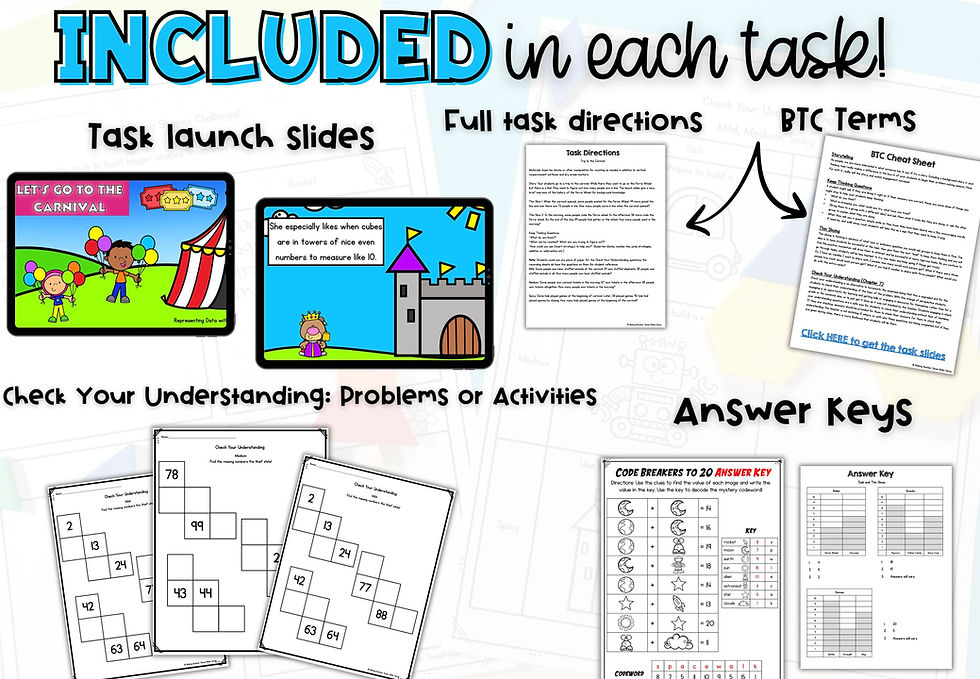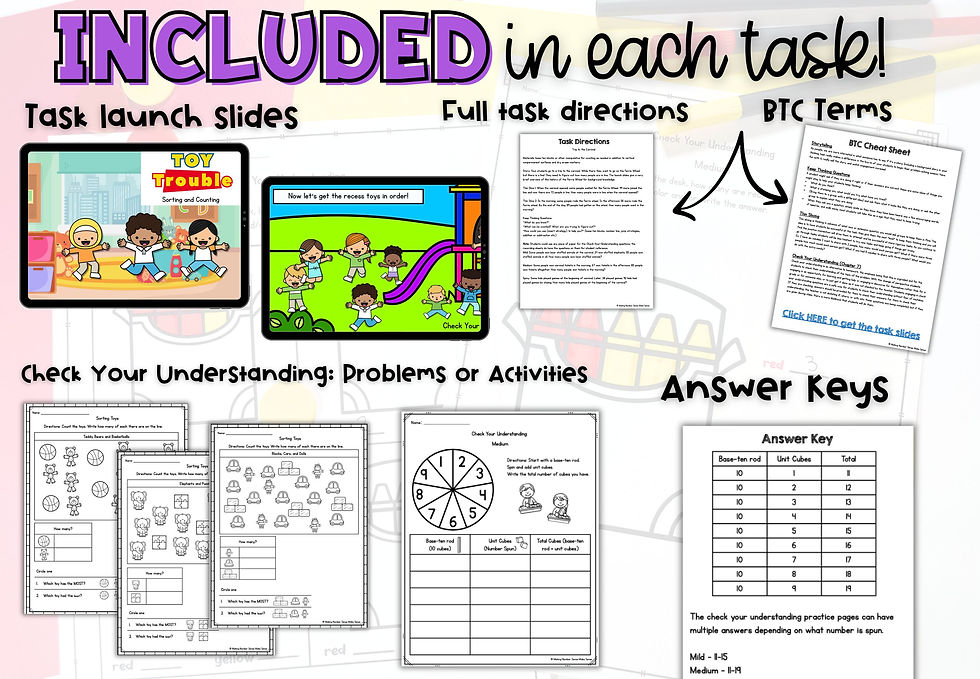Which One Doesn’t Belong: Number Sense Routine Series
- Lara

- Aug 7, 2023
- 3 min read
Updated: Jul 2
I may be dating myself here, but if you watched sesame street, you might remember the song, "One of these things is not like the others/one of these things doesn’t belong.” In it, they used to offer four choices and you would figure out which one didn't belong, like three sunglasses and one sand shovel and you (the viewer) would have to figure out which one didn't belong.
Fast forward a *few* years and which one doesn't belong is one of my favorite number sense routines for any time but especially at the beginning of the year.
It’s a great way to...
💡 Get your students to think critically and creatively.
🗣️ Get your students used to talking about their thinking.
💬 Get your students to practice academic conversational skills like agreeing/disagreeing respectfully, paraphrasing, repeating, clarifying, etc.
😁 Invites all learners to participate because there are no wrong answers.
Why use a number sense routine 📈
So why even do a number sense routine?
Number sense is one of those vague, elusive terms; everyone knows students need to develop number sense, but may not be sure where to start.
The truth is that it is a combination of activities that help students develop number sense throughout the school year.
Number sense routines are generally short and allow students to talk about their thinking and hear, and learn from other students.
There are lots of different number sense routines you can implement in your classroom, but “Which One Doesn’t Belong” is one of my favorites to get students thinking and talking!
If you’d like to learn about another number sense routine, Quick Images, you can read about it in this 3 Ways to Use Quick Images post.
How to do a Which One Doesn't Belong number talk
If you are focusing on a specific conversational skill, talk about what it is first, and you could show students the sentence frame you would like them to use and the purpose of the skill
Show the Which One Doesn’t Belong slide and give students quiet thinking time about their answer and why before they share it with a partner or with the class.
If your students were like mine, once they think they know, their hands go up, but this can discourage students who need more time for thinking or participating. You can have them show a small signal like a quiet thumbs up in front of their chest so they can “tell” you that they are ready without rushing other students.
If you have a turn-and-talk routine in place and they know their partner, they can turn and tell their partner their answer and explain why.
You can then have students share with the class their choice and why.
You can tally the most popular answer if you’d like, make sure to acknowledge that there is no wrong answer, because we all think differently.
Ways to differentiate
Which doesn’t belong Slides are easy to create, but can be time-consuming if you want to highlight a specific feature. You can make it more obvious by picking three pictures of Spiderman and one of Batman, or picking four characters from Spiderman, but two are cartoons and two are real people so students would have to look more closely to decide which doesn't belong.
You can also vary the goals of your number talk with different conversational skills. You may want to focus on introducing a specific conversational skill and give students a sentence frame of how to start that sentence.
If you would like some done-for-you Which One Doesn’t Belong no prep slides you can get them here!







Comments